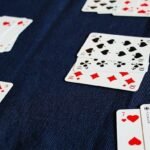Every game on the casino floor takes up valuable real estate. Therefore, it makes sense that the games which players enjoy the most occupy the largest portion of that space. It just so happens that the most popular games in the casino are also the ones that make the most money for the casino too.
If you want to up your odds a little, be sure to take advantage of the VIP scheme most casinos offer, as well as any other promotions they might have available.

As legalized online gambling spreads across the United States, competition is likely to heat up and there will be some great offers available. I found one such deal that includes both $10 in free chips and a 100% match bonus, too. Pennsylvania slots games fans should definitely take a look.
The Mathematics Of Slots
What isn’t up for debate is the mathematics behind these machines. Better computers have done away with physical reel strips altogether for more than 95% of machines, replacing them with animated video graphics instead.
If you’ve ever seen a computer game running on the latest Xbox or PlayStation consoles, you’ll know just how amazing computer-generated graphics can look in 2021.
But while the latest machines may look prettier, be more immersive, and even be noisier than ever before, peel back all the layers and what you are looking at is still nothing more than a random number generator.
Every time you press the spin button, a miniature lottery is running in computer code, just for you. You might know the odds of your local Powerball lottery, but do you know your odds when spinning the slots? Let’s find out.
Return to Player (RTP) Percentage
The RTP is the inverse of the house edge you’ve probably become familiar with when reading about other casino games. That is to say, a single-zero roulette wheel has a house edge of 2.7%; this therefore means that it has an RTP of 97.3%.
The RTP stated when the machine is loading up is known as the theoretical RTP and is calculated by the slot manufacturer simulating billions of spins and collating the results.
This allows the casino purchasing the machine to know, with a high degree of accuracy, what share of every dollar that is played through it will end up in their pocket after an extended period of time.
The flipside of this is the actual RTP, which the machine keeps track of privately, behind the scenes. Many modern machines will have a network reporting feature, allowing casino management to monitor for any unusual goings on with the slots on their floor.
Plotted on a graph over time, the line showing the actual RTP should begin to converge with the theoretical the more time passes by. If it does not, the casino knows there might be a problem with that machine.
Some slot machines allow the operator to select from a number of possible RTP figures for the same game, so don’t always assume that the RTP of your favourite game will be the same whichever casino you choose to play at.
Odds of Winning
For this example, we are going to imagine a very simple slot machine with an old-style three-reel setup and one pay line. If we say there are ten positions on each reel strip, but only one of them has a winning symbol on it, and you need to land all three of them to hit a jackpot – what are your odds?
Probability theory is notoriously difficult to understand for many people, which does give the casino owners the upper hand to a certain degree. When a question like this is posed on a typical SAT test paper, the most common error students make when they show their working is that they will add the probabilities together like this.
“One in ten on the first reel,
+ One in ten on the second reel,
+ One in ten on the third reel …
Equals a 3 out of ten chance at winning the jackpot.”
This is incorrect, because you actually need to multiply the various odds together, not add them. So, 1/10 x 1/10 x 1/10 = a 1 in 1,000 chance of winning the jackpot.
A typical five-reel video slot can have thirty or more positions on each reel, and the multiple pay lines you can play complicate things still further, which is why we stuck to a much more simplified example here. Your odds of hitting the jackpot on a five-reel slot can often be one in a million or less, however, so keep that in mind whilst playing.
Further Reading
There’s much more to learn about the math behind slot machines, but hopefully this quick primer has taught you a thing or two you didn’t know before. Happy slotting!
Join 25,000+ smart readers—don’t miss out!






